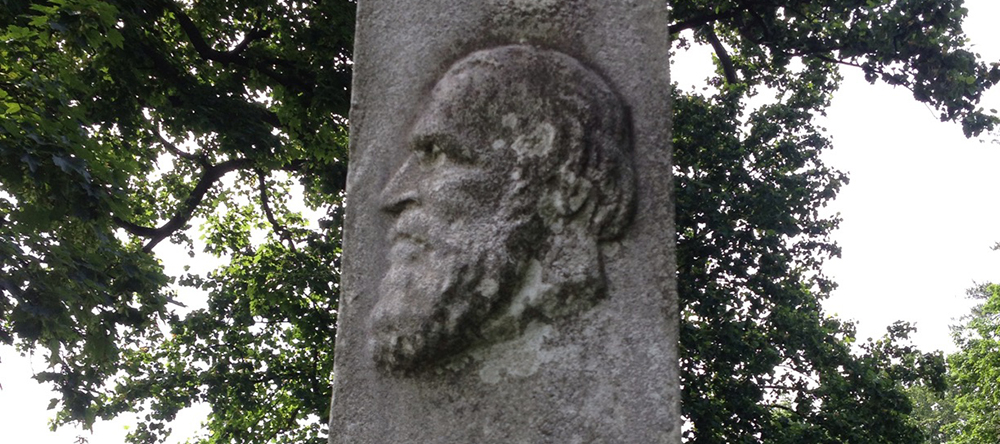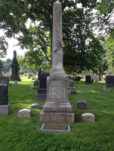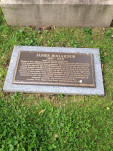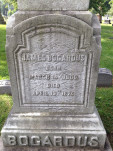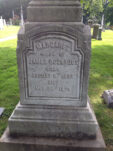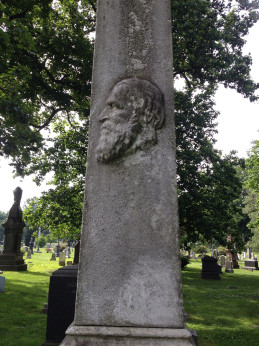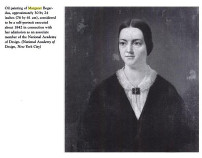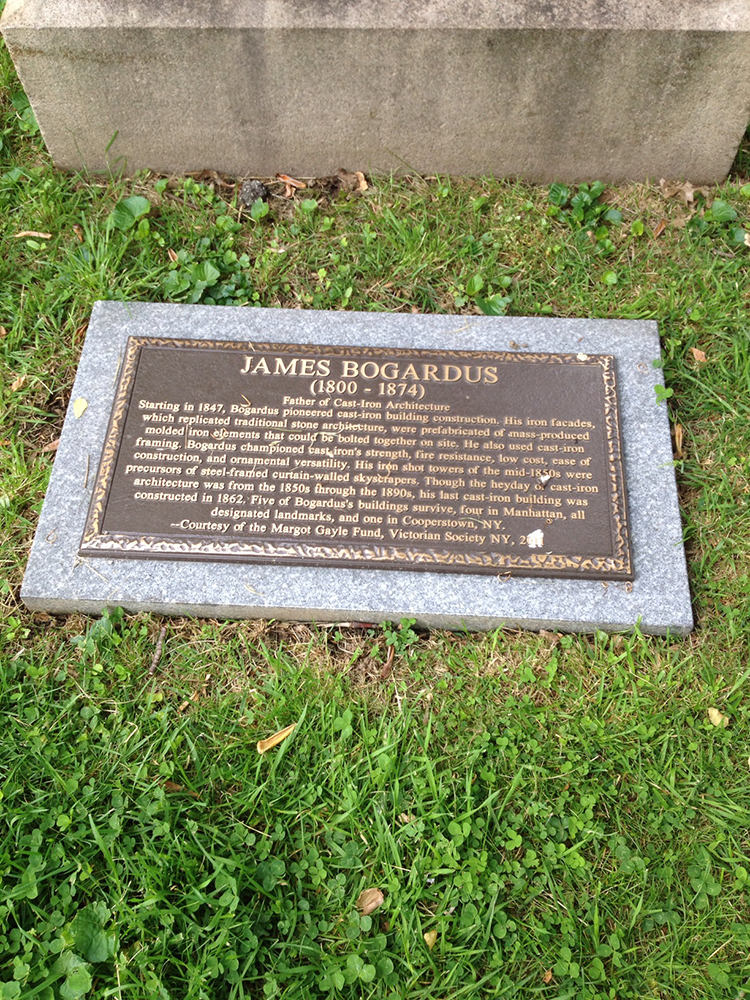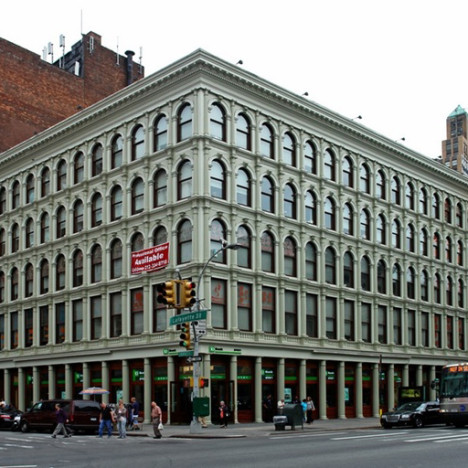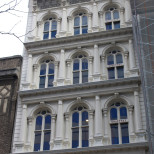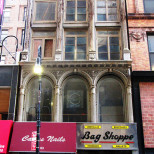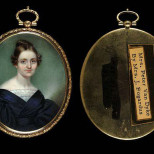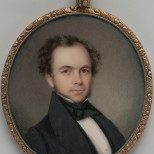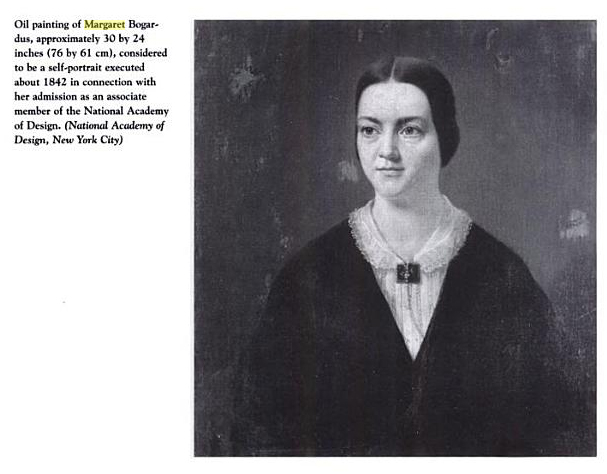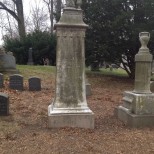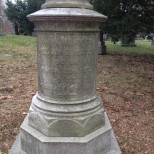James Bogardus’ grave caught my eye because of this small plaque at the base of it:
James Bogardus (1800-1874) is considered the “Father of Cast-Iron Architecture”. His invention of cast-iron building facades had a profound impact on contemporary architecture. For one thing, they were fire-proof, which was quite a plus during the days of gas lighting. Also, they were prefabricated; they could be built at his factory here in New York City, and then shipped to construction sites anywhere in the world. Used mostly in commercial and industrial buildings, these facades were more than just ornamental–their design was revolutionary. From the Encyclopedia Brittanica:
This method of supporting the weight of construction by columns, rather than the walls, was a significant step toward later development of skeleton framing and skyscrapers. Bogardus’ first use of these methods (1848) was in his own five-story factory in New York City.
Five of the buildings he designed/built are still standing. Four of them are in downtown Manhattan, and one is in Cooperstown, NY. Here are the four that are in NYC:
Bogardus was also a prolific inventor. In the 1830s he invented an engraving machine, and was subsequently hired by the U.S. Mint to engrave dies in bank notes. Other inventions include a machine for cutting watch dials, a gas meter, a cotton-spinning machine, and the “eccentric mill”, which is a machine used to grind and finish metal. It is still used today for lens grinding and for applying a smooth finish to the surface of ball bearings.

Despite his genius, Bogardus struggled financially for a number of years, and had to rely on income from his wife to get by. Which brings us to… Margaret Bogardus.
Margaret Bogardus (1803-1878) is just as intriguing as her husband. Margaret and James were married in a double wedding (with Margaret’s teenage sister) in her family’s home in 1831. Her father, the Reverend Archibald Maclay performed the ceremony (more on him to come). For many years the couple lived with Margaret’s family in their modest brick row house on East Broadway in Lower Manhattan.
Margaret was a renowned miniature portrait artist, and the living she made from selling her paintings was crucial to their financial stability. From Cast-iron Architecture in America: The Significance of James Bogardus, by Margot and Carol Gayle:
Painted portraits were much in demand until it became possible to product likenesses by photographic means. Those who could afford them commissioned pictures of family members or loved ones as tokens of affections, sometimes to mark such special occasions as weddings. …a miniature was a small portable personal memento that was more affordable (with standard prices ranging from $25 to $50 in the 1830s and 1840s).
Here are a few examples of her work:
These paintings are now in the National Museum of American Art at the Smithsonian.
Here’s a self-portrait she painted in 1842, when she was admitted to the National Academy of Design:
This was a pretty big deal at the time–there were very few women allowed in the National Academy of Design. She also showed her work in London at the Royal Academy. Way to go, Mags!
Margaret’s father was the Reverend Archibald Maclay (1776-1860), a prominent Baptist minister. A native of rural Scotland, he spent thirty years as the pastor at the Tabernacle Baptist Church on Second Avenue in Manhattan. According to The life of Rev. Archibald Maclay, D.D., 1776-1860, by Isaac Walker Maclay (his grandson), he was greatly beloved by his congregation, and was affectionately nicknamed “Father Maclay”.
Here’s a painting of him by Margaret:
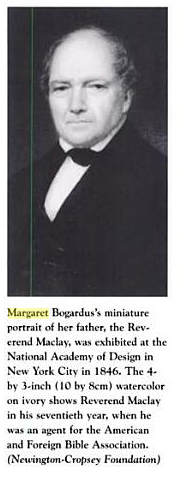
Father Maclay is not buried near his daughter and James, but he is buried in Green-Wood. He’s in a different lot some distance away. Just for fun, I tracked down his grave today, which took me FOREVER to find because it’s so worn-down:

